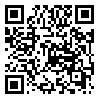
International Journal of Industrial Engineering & Production Research
Iran University of Science & Technology
BibTeX | RIS | EndNote | Medlars | ProCite | Reference Manager | RefWorks
Send citation to:
URL: http://ijiepr.iust.ac.ir/article-1-642-en.html
2- University of Tehran ,
This paper presents a bi-objective capacitated hub arc location problem with single assignment for designing a metro network with an elastic demand. In the literature, it is widely supposed that the network created with the hub nodes is complete. In this paper, this assumption is relaxed. Moreover, in most hub location problems, the demand is assumed to be static and independent of the location of hubs. However, in real life problems, especially for locating a metro hub, the demand is dependent on the utility that is proposed by each hub. By considering the elasticity of demand, the complexity of solving the problem increases. The presented model also has the ability to compute the number of trains between each pair of two hubs. The objectives of this model are to maximize the benefits of transportation and establishing the hub facilities while minimizing the total transportation time. Furthermore, the bi-objective model is converted into a single objective one by the TH method. The significance of applicability of the developed model is demonstrated by a number of numerical experiments and some sensitivity analyses on the data inspired by the Qom monorail project. Finally, the conclusion is provided.
Received: 2015/05/2 | Accepted: 2016/12/10 | Published: 2017/04/17
| Rights and permissions | |
 | This work is licensed under a Creative Commons Attribution-NonCommercial 4.0 International License. |




